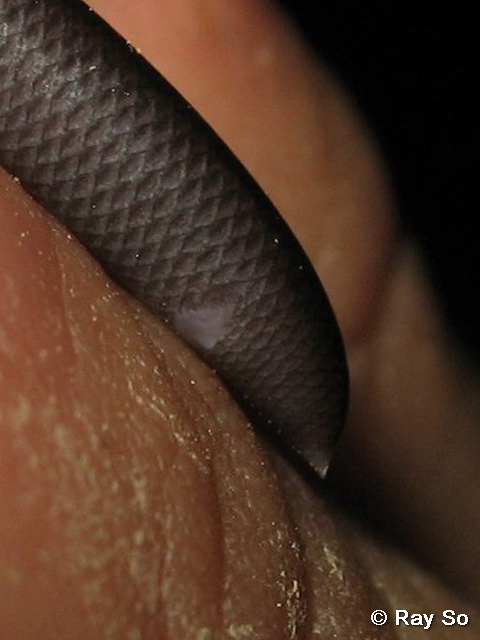Ramphotyphlops braminus (Daudin, 1803)
Common Blind Snake 鉤盲蛇
(Non-venomous)
Suborder
Serpentes 蛇亞目
Body worm-like, thicker than White-headed Blind Snake (R. albiceps).
Chin whitish. Tail very short and blunt, with a small chitinous spur at the tip.
Eyes underneath the head scales, barely discernible. Scales smooth, similar in size all over the body.
Found in almost any terrestrial habitat;
often inside water drains filled with soils and leaf-litter in urban areas, suburban gardens, cultivated fields and forest, and in semi-arid localities.
Altitude range does not exceed 600 m.
Sometimes several individuals (18 on one occasion) hide together underneath objects such as rocks, wooden boards of flower pots.
Has also been dug up during excavation work. When uncovered, tries to burrow back into the soil.
If picked up, writhes frantically and presses the tail spine into one's skin, causing a slight pricking sensation.
Turns bluish-grey when ready to slough.
In feeding on termites, eats only the softer parts and discards the hard chitinous head.
Usually viviparous, but also oviparous on occasion as one specimen was observed to lay 6 eggs.
The most abundant snake species in Hong Kong, occurring throughout the territory, from tiny islands to large plains and hillsides in the mainland New Territories.
Widely distributed from India to central and southern China, the Ryukyus and Malay Peninsula. Introduced into many countries in the tropics.


